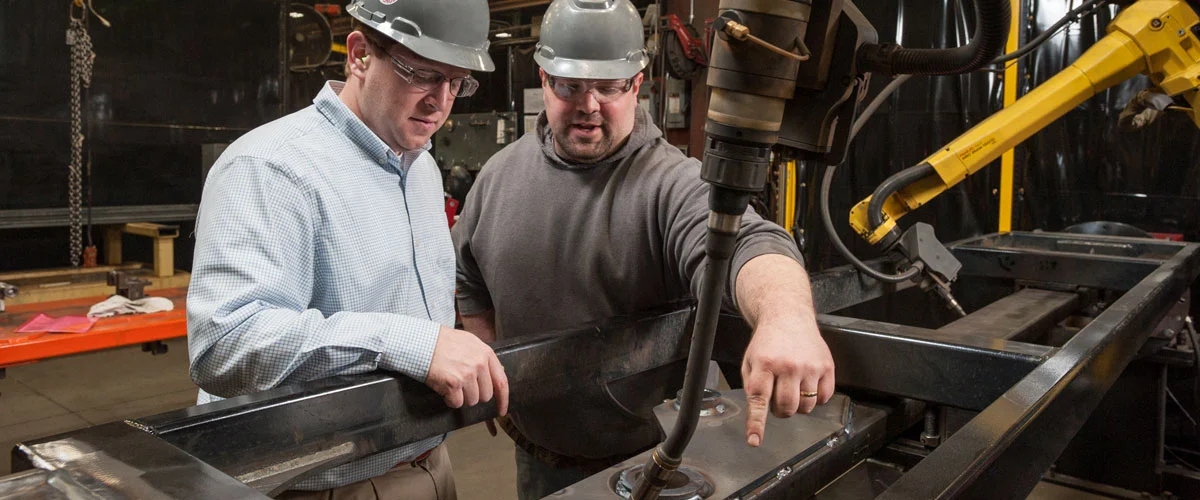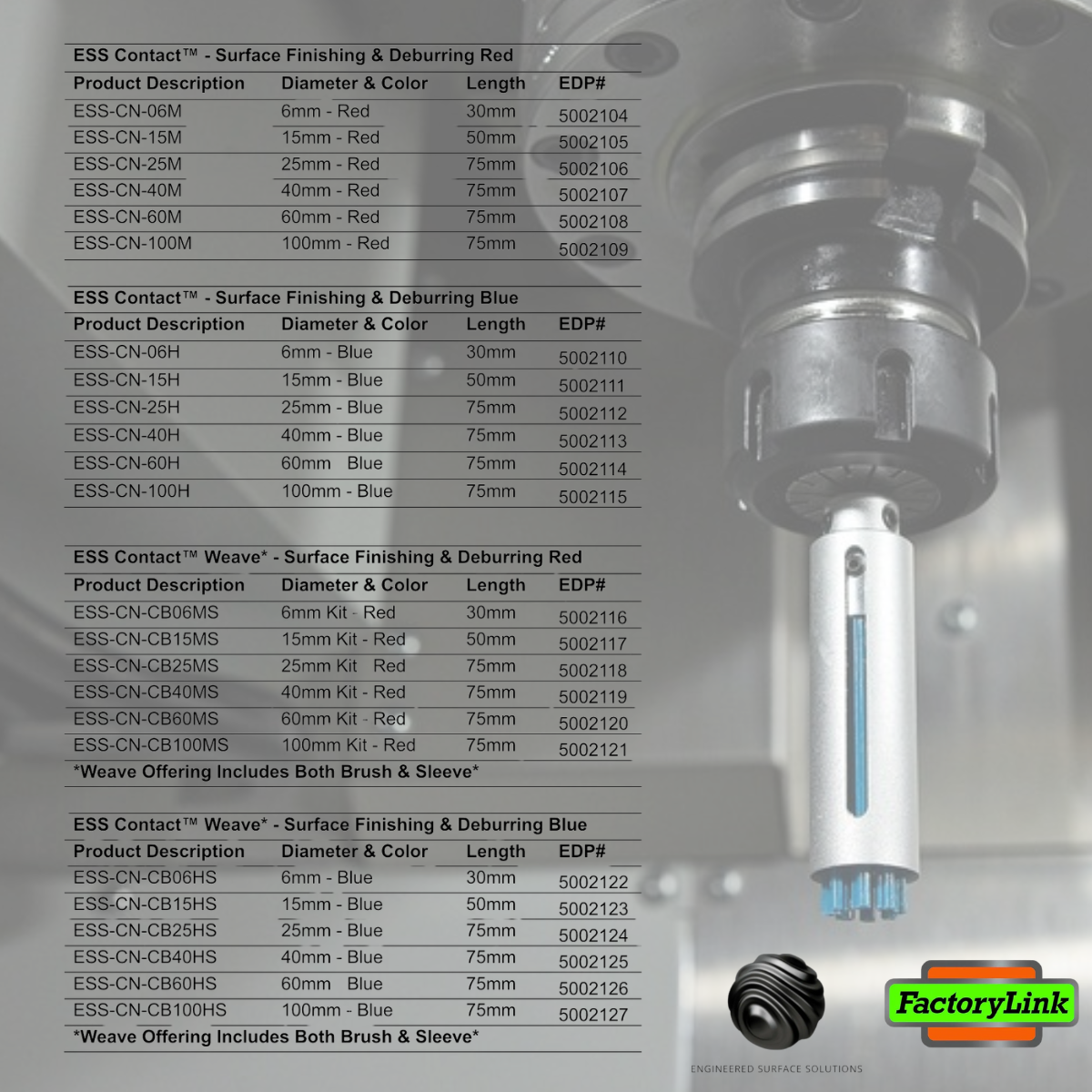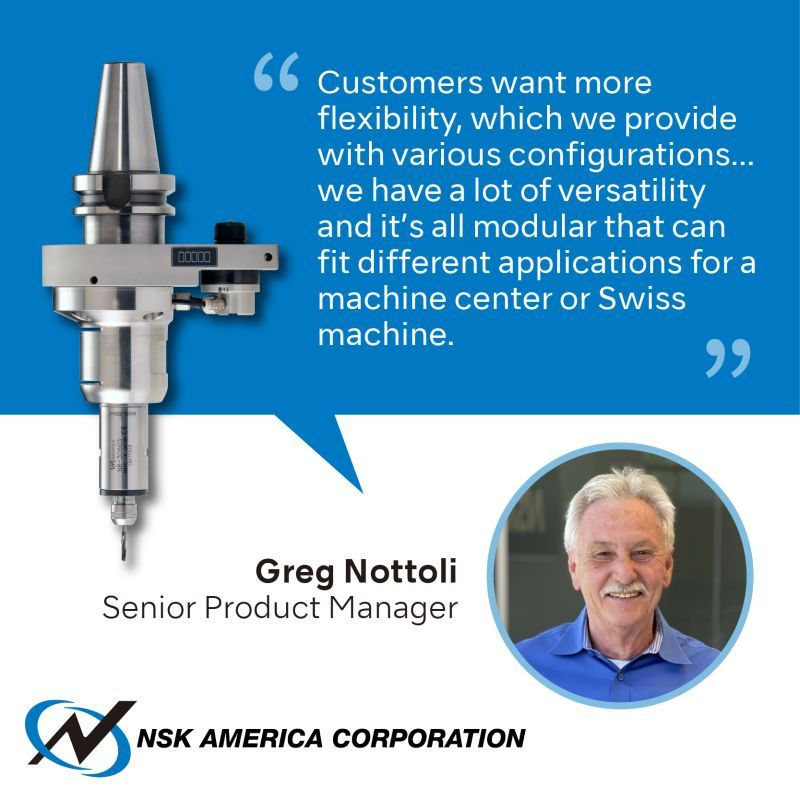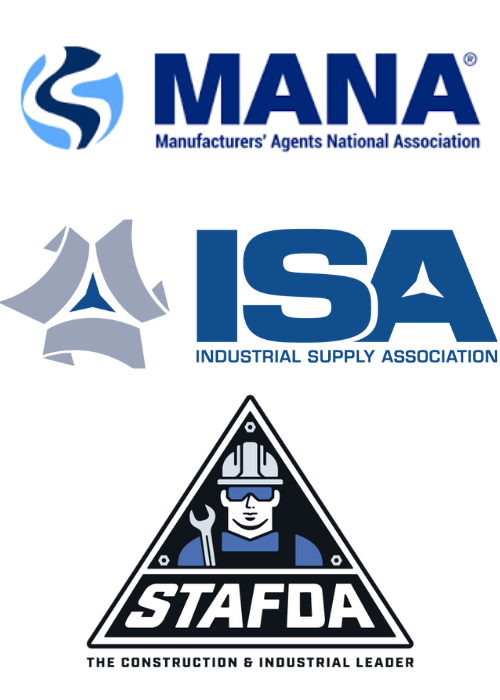Spindles Speed Ahead
Greg Nottoli has seen a lot of changes in the manufacturing world. Prior to joining NSK in 2004, he spent about 20 years on the OEM side of the machine tool industry. As the industry speeds ahead, customer requirements and work environments are becoming more demanding. Spindles, a cornerstone of every machine tool, also are evolving—increasingly higher speeds are of the essence. Nottoli shares his insights with Manufacturing Engineering (ME).
ME: What’s driving the shift to higher speeds?
Nottoli: High-speed spindles are becoming a necessary accessory for machine tools, and machining and robotics applications. Today’s tools need quite a bit more speed and accuracy; they’re in the cut longer even with high-speed machining. Adding a high-speed spindle to a machine provides the opportunity for speeds that you can’t normally get out of a CNC, without stressing out the machine spindle. Everyone is running equipment for excess periods, which is never good for a machine spindle. But we can do very long durations with a high-speed spindle.
ME: What types of applications require this?
Nottoli: Really, there’s not an industry out there that doesn’t use it. Medical, aerospace, automotive and semiconductor all have components that have either small diameter holes or small features that need high-speed (+20,000 rpm) spindles—whether it’s a car fuel injector, bone screws or medical devices, and obviously circuit boards. There are just so many applications for small diameter tools, whether it’s cooling holes in carbon composite or drilling in satellite disks.
ME: What other advances and trends are affecting spindles?
Nottoli: Manufacturers want compact tools with speed and power. We’ve made a lot of advances in making smaller systems that maintain power and torque. And, of course, accuracy is a huge part of the equation. Not having that accuracy leads to harmonics and vibration, where you hear the tool singing. That affects the tool, the work piece and surface finish. So accuracy is a very important aspect of high precision and high-speed machining. All NSK spindles are less than 1 micron TRI, and our standard collets are 3-5 micron TRI.
ME: Can high-speed vibration be minimized?
Nottoli: Picking the right assembly is critical—whether it’s two bearings in the front and two in the back or another configuration—so you can handle any type of axial or radial deflection. For anything over 40,000 rpm we use grease-packed ceramic bearings rather than steel.
ME: Have customer requirements changed?
Nottoli: A lot of people are asking about coolant-through. This has been used for deep-hole drilling for a long time, now it’s increasingly for small diameter tools, too. Everyone is trying to get chips evacuation at higher speeds and feed rates, which is something that coolant-through allows. ... We’re talking very small holes, 5-6 thousandths diameter that’s coming out of a 2-mm drill, so it’s a very different technology and the kind of speeds and feeds you need to stay competitive.
ME: Are job-specific applications increasing?
Nottoli: Customers want more flexibility, which we provide with various configurations—such as a straight or a 90° spindle, air bearing or turbine electric, etc. We have a lot of versatility and it’s all modular that can fit different applications for a machine center or Swiss machine. We’re also working with robot manufacturers and integrators.
And our new iSpeed5 is an electric fully tool-changeable, high-speed motor spindle with a 350-W brushless DC motor in 60,000 or 80,000 rpm. It enables high-speed micromachining for any time period using current machine tools. The iSpeed5 can run 24/7; it’s a really phenomenal spindle.





